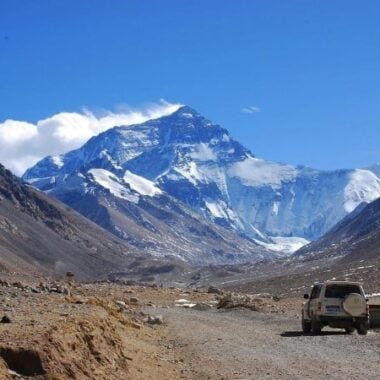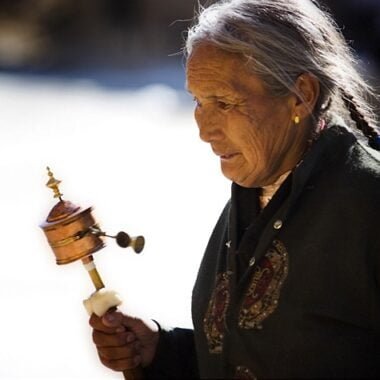Mount Everest Base Camp: A Gateway to the World’s Highest Peak
Mount Everest Base Camp (EBC) is a world-renowned destination for trekkers and mountaineers, offering a close-up view of the planet’s tallest peak….
Mount Everest Base Camp (EBC) is a world-renowned destination for trekkers and mountaineers, offering a close-up view of the planet’s tallest peak. Located at an altitude of 5,364 meters (17,598 feet) on the southern side in Nepal, and at 5,150 meters (16,896 feet) on the northern side in Tibet, these base camps serve as the starting points for most of the Everest expeditions. The journey to either base camp is an adventure filled with breathtaking landscapes, cultural encounters, and the thrill of being close to the top of the world.
The Nepal Side Base Camp
The trek to the Nepal side of Mount Everest Base Camp is one of the most popular trekking routes in the world. The journey typically begins in the town of Lukla, accessible by a short flight from Kathmandu. From Lukla, trekkers follow a well-established trail through the Khumbu Valley, passing through picturesque villages, suspension bridges, and dense forests of rhododendron and pine.
Key Highlights:
- Altitude: 5,364 meters (17,598 feet)
- Route: The trek passes through notable stops like Namche Bazaar, Tengboche Monastery, Dingboche, and Gorak Shep.
- Scenery: Trekkers are treated to stunning views of towering peaks, including Lhotse, Nuptse, Ama Dablam, and Everest itself.
- Cultural Experience: The trail is dotted with Sherpa villages, offering insights into the local culture, traditions, and hospitality.
Reaching Everest Base Camp is an exhilarating experience, providing trekkers with a sense of accomplishment and the opportunity to witness the hustle and bustle of mountaineering expeditions preparing for their ascent.
The Tibet Side Base Camp
The northern Everest Base Camp in Tibet is equally fascinating. The journey to this Tibetan base camp often begins in Lhasa, followed by a scenic drive through the Tibetan Plateau, passing through historic towns and dramatic landscapes.
Key Highlights:
- Altitude: 5,150 meters (16,896 feet)
- Route: The drive typically includes stops at Gyantse, Shigatse, and Rongbuk Monastery, which is the highest monastery in the world.
- Scenery: The route offers panoramic views of the Himalayas, vast plains, and the unique Tibetan terrain.
- Cultural Experience: Travelers can explore the rich Tibetan culture, visiting monasteries, and interacting with local Tibetan people.
The Tibetan base camp provides a different perspective of Everest, with the imposing North Face of the mountain dominating the horizon. It’s a quieter and more introspective journey compared to the bustling trek in Nepal.
Challenges and Preparation
Trekking to Mount Everest Base Camp, whether from Nepal or Tibet, requires careful preparation due to the high altitude and challenging conditions. Acclimatization is crucial to prevent altitude sickness, and trekkers should plan for gradual ascent and include rest days in their itinerary.
Preparation Tips:
- Physical Fitness: Ensure good physical conditioning through regular cardiovascular and strength training exercises.
- Acclimatization: Incorporate acclimatization days into the trek to adjust to the high altitude.
- Gear: Pack appropriate clothing and gear, including layered clothing, sturdy boots, sleeping bags, and trekking poles.
- Permits: Obtain necessary permits, such as the TIMS card and Sagarmatha National Park entry permit for Nepal, and travel permits for Tibet.
Environmental Considerations
With the increasing popularity of trekking to Everest Base Camp, environmental concerns have become more prominent. It is essential for trekkers to follow sustainable practices to minimize their impact on the fragile mountain environment.
Sustainable Practices:
- Waste Management: Carry all waste back and dispose of it properly.
- Water Consumption: Use purification tablets or filters to avoid plastic bottle waste.
- Respect Wildlife: Avoid disturbing the local flora and fauna.
- Support Local Communities: Use local services, buy local products, and respect local customs.
Conclusion
Mount Everest Base Camp is more than just a waypoint for mountaineers; it’s a destination that embodies the spirit of adventure and the majesty of nature. Whether trekking through the vibrant Khumbu Valley in Nepal or the serene Tibetan Plateau, reaching the base camp is a journey of personal achievement and profound beauty. For those who dream of standing at the foot of the world’s highest peak, Everest Base Camp offers an unforgettable adventure, etched with the grandeur of the Himalayas and the warmth of local cultures.












just to check this comment form to see how it goes